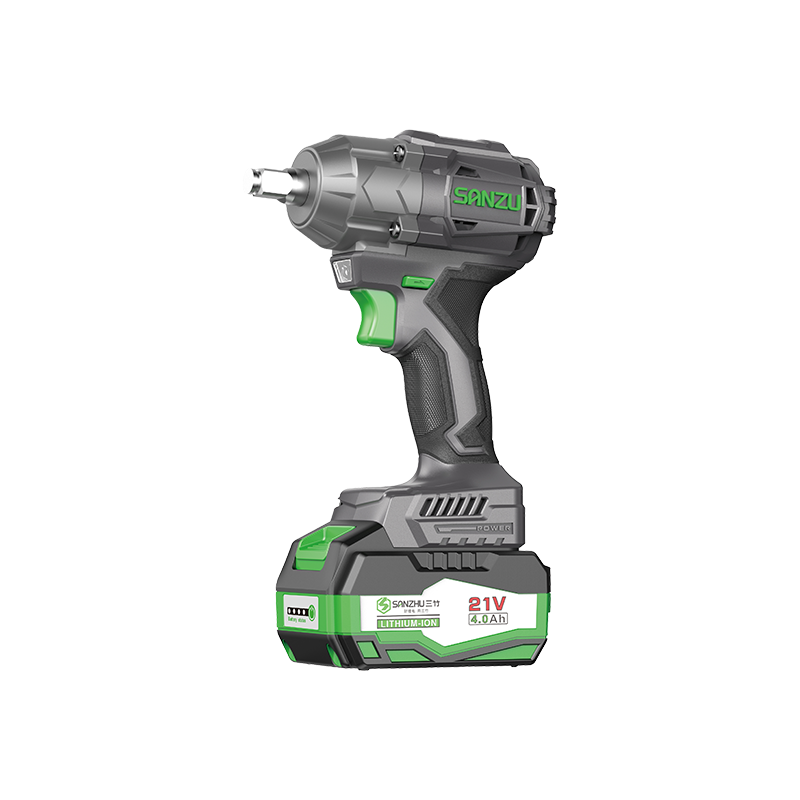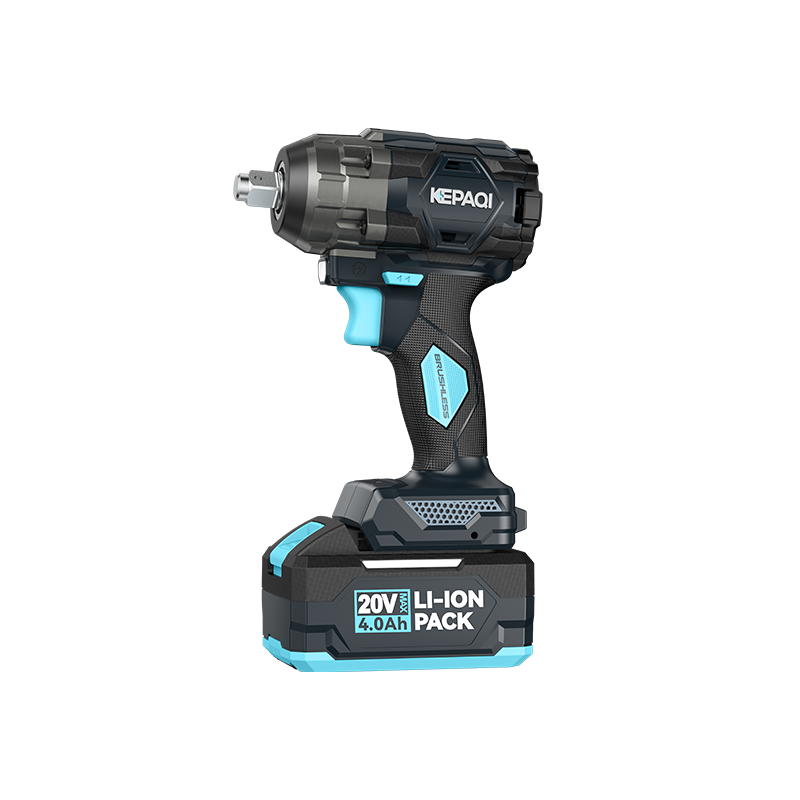2025-06-10
As an efficient and durable power tool, brushless impact wrench is widely used in various industrial, maintenance and assembly operations. One of its core technologies is a brushless motor. Brushless motors have significant advantages in efficiency, life and torque output compared to traditional brushed motors. However, the motor design has a direct impact on the output stability of the brushless impact wrench.
Motor speed and torque output characteristics
The speed and torque output characteristics of brushless motors are the basis for determining the stability of the tool performance. Brushless motors replace traditional brushes and commutators with electronic control, making the speed and torque output more stable and efficient. The motor design needs to ensure that the required torque can be provided stably at high speeds, otherwise torque fluctuations may occur and work effect may be affected.
When designing brushless motors, the relationship between speed and torque needs to be accurately matched. Excessively high speeds may lead to instability in the motor output torque, while too low speeds may cause the tool to not maintain sufficient operating efficiency under high loads. Therefore, motor designers need to balance the speed and torque output by selecting the appropriate rotor and stator sizes, as well as optimizing the electromagnetic design, ensuring that the brushless impact wrench can maintain a stable output in different working scenarios.
Stator and rotor design
The stator and rotor of a brushless motor are its core components, and its design directly determines the power density and efficiency of the motor. The arrangement of stator windings, the number of coils and material selection will all affect the output capability of the motor. An efficient stator design can reduce energy loss and improve the output efficiency and stability of the motor. The design of the rotor part requires optimizing the magnetic field distribution to ensure that the motor can smoothly convert electrical energy into mechanical energy during operation, avoiding unnecessary vibration and noise.
The matching of the relative position of the stator and rotor, the size of the air gap and the magnetic field density is also a key factor affecting the stability of the motor. If the air gap is not designed properly, it may lead to uneven distribution of the magnetic field of the motor, which in turn causes increased friction between the rotor and the stator, reduces motor efficiency and produces unstable output.
 |
 |
Electronic control system and torque adjustment
The electronic control system of brushless motors plays a crucial role in the stability of torque output. The motor regulates the current through precise electronic controllers, controlling the motor's speed and torque. Electronic control systems usually use pulse width modulation (PWM) technology to control the motor's power output and maintain the stability of the torque output. Under different workloads, the electronic control system is able to adjust current and voltage in real time to ensure that the brushless impact wrench provides the required constant torque.
However, the design of a motor control system requires a balance between multiple factors. For example, how to avoid frequent power regulation caused by overload protection and temperature control system startup often affects the continuity and stability of the tool. The optimized control system not only avoids overload, but also dynamically adjusts the power output according to the working state of the tool for optimal torque stability.
Motor cooling and heat management
Brushless motors operating under high loads generate a lot of heat. If the heat cannot be dissipated in time, too high the motor temperature will directly affect the motor performance, resulting in unstable torque output. The thermal management design of the motor is crucial to its stability. In high load applications, the temperature of the motor will gradually rise. If the temperature is too high, the magnetic performance of the motor will degrade, resulting in weakening of torque output.
To ensure that the brushless motor can still work stably in high temperature environments, designers usually add heat dissipation devices to the motor, such as heat sinks, fans and heat dissipation pipes, to help dissipate heat in a timely manner. Some high-end brushless motors are also equipped with intelligent temperature control systems, which can monitor the motor temperature in real time and automatically adjust the current and speed to prevent overheating, thereby ensuring that the motor can provide stable output under various operating conditions.
Motor efficiency and energy loss
Brushless motors have higher efficiency and less energy loss than brushed motors, so they can maintain a more stable torque output during high load operation. When designing brushless motors, it is necessary to optimize the winding structure and magnetic materials to reduce energy losses such as iron and copper losses, and improve the overall efficiency of the motor. An efficient motor not only reduces battery consumption, but also avoids overheating or performance degradation caused by energy loss.
The improvement in motor efficiency means that greater torque can be output at the same current and the torque output is more stable. This is especially important for brushless impact wrenches, especially under high loads or long working hours. Higher motor efficiency ensures that the tool maintains stable performance over a longer period of time and reduces frequent shutdowns or power fluctuations.
Motor material selection
The choice of the motor material occupies an important position in the design of brushless motors. The magnetic materials of the stator and rotor and the materials of the winding coil directly affect the efficiency and stability of the motor. Generally speaking, high-performance brushless motors use highly magnetic and highly conductive materials that can effectively improve the power density and torque output stability of the motor.
In the rotor part, rare earth magnets or high-performance permanent magnet materials are often used, which can provide a stronger magnetic field and ensure that the motor maintains higher efficiency under different loads. The choice of stator winding material is also crucial, and copper wires that are resistant to high temperatures and low resistance are usually selected, which can reduce resistance loss and reduce heat generated as current passes through the winding.